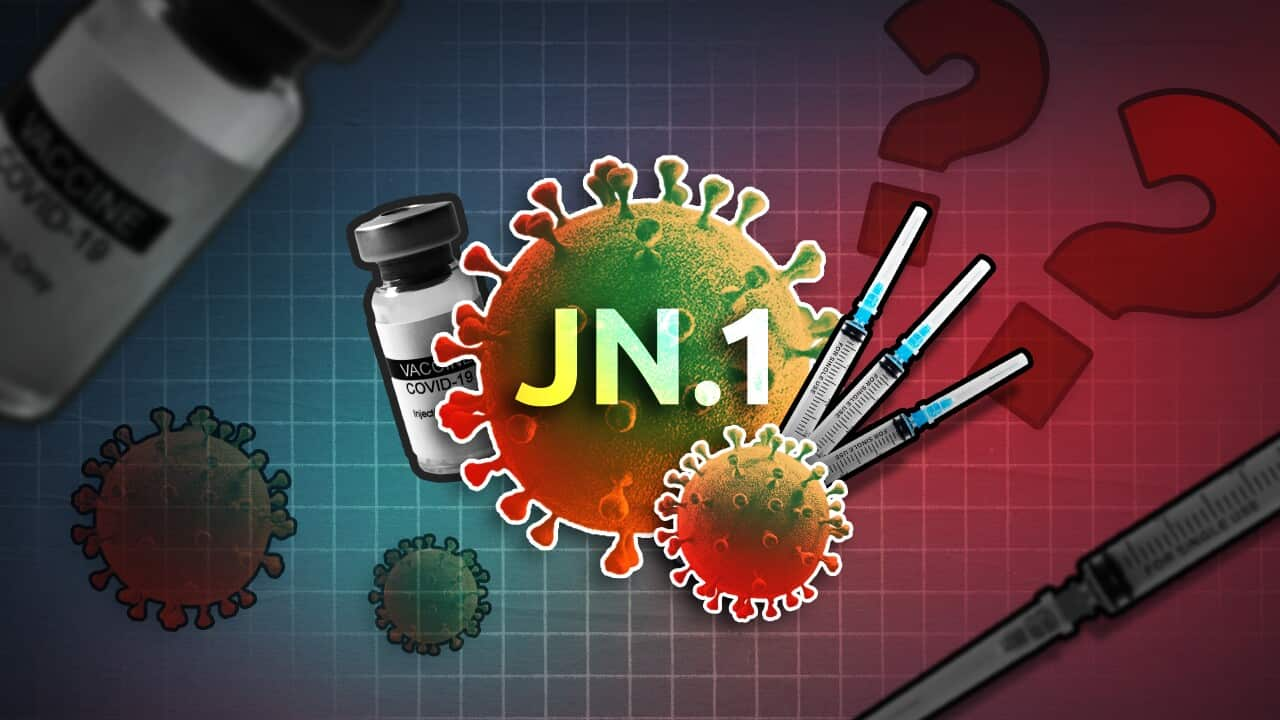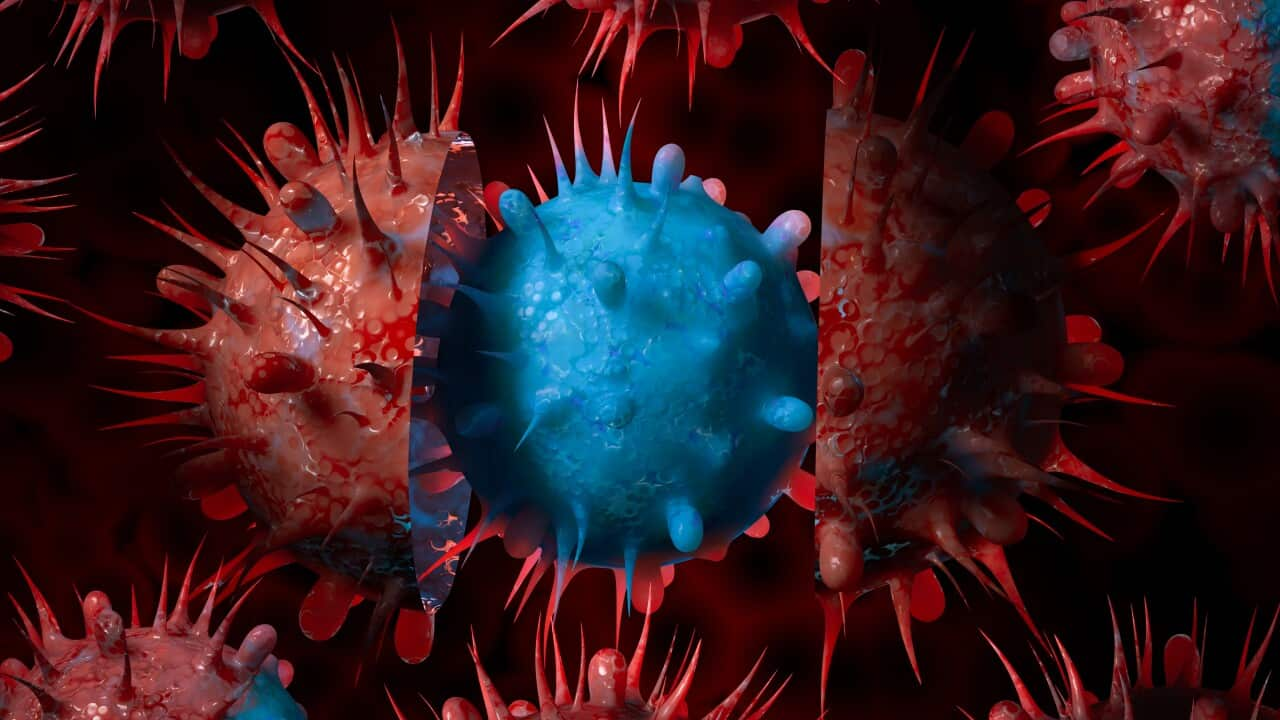Key Points
- Numbers of COVID-19 cases in five states have fallen from recent highs, an expert said.
- The majority of recent cases have been the JN.1 variant, which has become dominant in Australia and overseas.
- Experts have reminded people to be up to date on their vaccinations.
Australia experienced a in the lead-up to the Christmas and New Year period, but the latest wave might now have reached a peak.
Sydney sewage data indicates that transmission may be plateauing, according to NSW's latest fortnightly respiratory surveillance report for the week ending 20 January.
Emergency department presentations in all age groups declined, though the report cautioned the figures may be influenced by primary healthcare availability over the holiday period.
COVID-19 PCR test positivity was recorded at 13.9 per cent, a decline from the 17.9 per cent recorded the week ending 6 January.
In Victoria, the state health department's weekly COVID-19 report also showed decreased levels of virus activity.
Professor Adrian Esterman, an epidemiologist from the University of South Australia, also believes that, based on state and territory reports, there appears to be a decreasing trend in case numbers nationally.
"Victoria and NSW appear to be over the peak, and numbers have also declined in South Australia and Queensland as well as in Western Australia," he said.
Professor Catherine Bennett, Deakin University's chair of epidemiology, is also optimistic.
"I have been watching this (the recent data) in Victoria where the late spring peak started to emerge a week or so earlier than other jurisdictions," she said.
"And that has tended to be an indicator of what is likely to follow in other jurisdictions."

COVID-19 variant JN.1 drove an increase in hospitalisations across NSW and Victoria over the Christmas and New Year period. Source: AAP / Steven Saphore
"This is a good indicator of current infection load in the community, whether people have symptoms or not," Bennett said.
JN.1 is dominating
COVID-19 variant JN.1 responsible for a steep increase in hospitalisations across NSW and Victoria over the holiday period.
Testing by NSW Health showed the proportion of JN.1 cases rising sharply from late November and increasing into December before starting to plateauing in January.
In Victoria, the variant has been increasing since early December.
Recent data from Victoria shows that JN.1 makes up around 71 per cent of all wastewater samples in the state. This is the first time since 2022 that one type of virus has been the most dominant in Victoria, replacing the previously dominant type, BA.5.
Esterman said that after the BA.4 and BA.5 wave, there was "a whole soup of subvariants".
"Then along came EG.5 (Eris) and its descendants, which did tend to dominate. However, Eris has now been completely overtaken by JN.1, a descendant of BA.2.86.
"JN.1 is now by far the most common subvariant in Australia (and around the world), so it is not surprising that it is being found in wastewater."
JN.1 emerged from the Omicron variant BA.2.86, known as Pirola, which made waves when first discovered in July 2023 and, experts say, is better at evading our immune system.
What to expect next?
This wave would be similar in duration to previous waves but given we still have both JN.1 and EG.5.1 circulating, along with other variants that have been around since winter, this wave might have a longer tail as infection rates start to drop.
Bennett said this wave would likely be comparable in duration to previous waves.
But she said considering the continued circulation of both JN.1. and EG.5.1., along with other variants existing since winter, there might be a longer tail to this wave as infection rates start to decrease.
"It is important to remember that the risk of exposure to the virus remains high for the first weeks after a peak," she said.
According to Esterman, we should anticipate additional surges of infections in the coming 12 months.
"For me, the most concerning thing is the very low percentage of elderly people — 23 per cent of people aged over 75 — who are up to date with their booster shots, with only 30 per cent of aged care residents up to date."
Last week, NSW Health Minister Ryan Park said while it is encouraging to see a COVID-19 plateau, the best protection .
"Now is not the time to become complacent," he said.
"If you're experiencing cold or flu symptoms, stay at home. If you need to go out, mask up.
"If you haven't had your 2023 booster, go get one."












